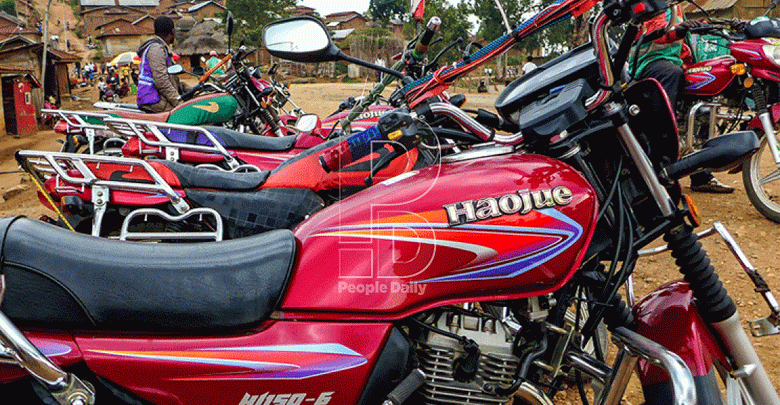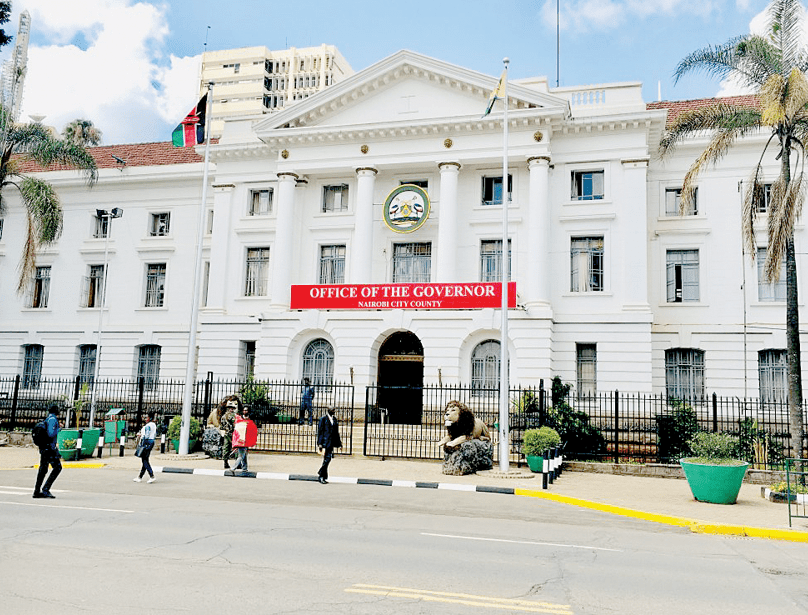Speed limiter aims to reduce motorcycle accidents

An incident in one .afternoon in September 2014 involving a boda boda rider and an ambulance shook Kenny Njenga to the core. After six hours on the road from Nanyuki with a sick mother, then finding Nairobi Hospital packed, Njenga was deficient of time. He had to follow a nurse’s advice.
“Transfer the patient immediately,” the nurse said. A police officer who was at the hospital’s parking bay overheard the conversation, and offered to guide the ambulance through the traffic at peak time. As the ambulance snaked its way to the Aga Khan Hospital, it happened that the driver was negotiating a less crowded roundabout when he experienced a head-on collision with a boda boda that was riding on the wrong lane.
Irate operators
Within a fraction of seconds, more than 20 riders had surrounded the ambulance making all sorts of demands. “It is money or else…,” they retorted. Njenga, 30, did not wait to hear the full statement. The irate mob didn’t care about the patient on board.
“I asked them how much they were asking for, we sorted the matter out and moved from the scene fast,” he recalls, adding that the incident jolted him, and immediately concluded that there was a need for solution. What mattered most at that particular moment was his mother’s life.
It was just in the same year, when driving to Embu, a similar incident had happened before his eyes, but that particular one was fatal. A rider who was ferrying chicken, and as he overtook him, he couldn’t manage to avoid an on-coming truck.
“I had not completed my statement wondering what would happen to him if he lost control. Together with his load of chicken, they were cut into pieces,” he said.
It was after the two incidents that Njenga convinced himself he must find a solution. Uncontrolled driving and riding coupled with speeding, has seen the number of road fatalities rise annually in Kenya.
“Statistics from the National Transport and Safety Authority (NTSA) demonstrate that at least 70 per cent of motorcycle accidents involve speeding,” says Njenga, who has innovated the Salama speed governor for motorbikes. With his business partner Dominic Kamau, an electric engineer, he’s relying on data from NTSA that point to a disturbing trend in which road carnage involving boda boda riders are currently more than vehicle accidents.
On the ground floor of the Fortis Tower in Westlands, Nairobi, Njenga joins Kamau in demonstrating how the gadget works. “It’s designed to provide a number of benefits to the rider. The benefits are wide ranging and extend to the domestic level where they are bound to increase livelihood,” he says, adding that the speed limiter safely cuts off engine power when a motorcycle exceeds a limit of 50kph.
How it works
“The motorcycle immediately reduces its speed and the micro-circuit unit automatically controls the relay to recover the engine power in a quick, safe and effective sequence,” Njenga says.
It has three major components namely; a micro-circuit unit; speed sensor and wiring gear. Speed governing, he explains, has no effects on the normal functionalities of the motorcycle, has zero interference with the motorcycle’s braking system and does not have vibrations or discomfort whatsoever.
Through a speed sensor and microcircuit unit fitted in the device, maximum speed is maintained. The result is that the motorcycle will immediately reduce its speed as the micro-circuit spontaneously controls the relay to recover the engine power in a quick, safe and effective sequence.
“The process is so seamless you cannot feel it. You will notice there is no more power and you cannot accelerate. Once you release the gas accelerator then the motorbike regains its engine power,” he explains.
The speed limiter is also fitted with a motorcycle tracking location monitoring through a Global Positioning System (GPS) where the tracker allows a motorcycle owner to monitor in real time the location of the machine through their personal computer, iPads or even mobile phones.
Surveillance
“This way the owner of a motorcycle or fleet has 24-hour access to surveillance provided by our online tracking system,” he adds.
He says the fourth-generation speed limiter meets the speed governor standards as set out by the Kenya Bureau of Standards (Kebs), incorporating a tamper-proof option guarding against any rider interfering with it. Says Njenga, “The NTSA sent us to Kebs who informed us to use motor vehicle standards, which we have incorporated where all functionality on motor vehicle speed governors are found in this gadget.”
The maximum speed can also be configured to a limit that the government sets for motorcycles. The inbuilt tracking system is fitted with GPS and GSM (Global System for Mobile Communications) trailing capabilities, which allows for real time monitoring as the system generates immediate reports of where the motorcycle is at any time through phones, tablets or personal computers.
The report contains current position, riders profile, routes taken, distance travelled, and real time speed record, and power disconnection alert, giving the information via Short Message Service (SMS) and General Packet Radio Service (GPRS).
For the records
He further explains that the device is designed to give security agencies enhanced control of boda bodas. “The device will give police real-time and historical data of all boda bodas, making it easy for them to identify culprits, incidents and accidents. This will enable them to know which bike was where at any particular time,” he says.
Salama Speed Limiters, Njenga says, is working with financiers who are willing to buy the gadgets and later distribute to riders who will pay between Sh9 to Sh13 per day—depending on the agreement—for a period of a year or two.












